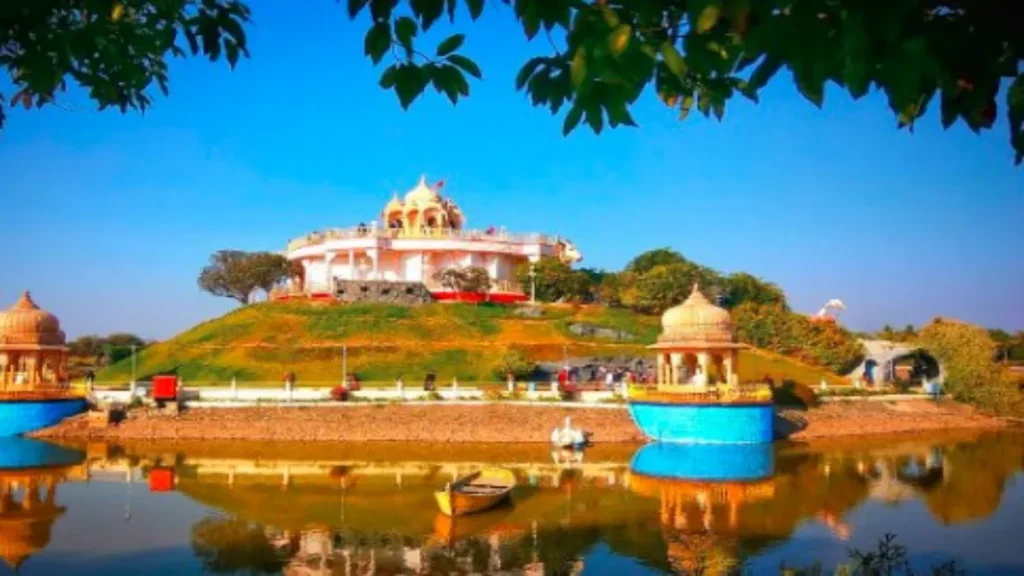Akola District: MAHARASHTRA
Akola District: Discover the cultural richness and agricultural prominence of this historical region in Maharashtra, India. Explore its festivals, landmarks, and economic growth.

Akola District is a region of historical and cultural significance located in the state of Maharashtra, India. Situated in the eastern part of the state, Akola District spans an area of around 5,431 square kilometers and is known for its rich heritage, vibrant traditions, and agricultural prowess.
The district’s administrative center, also named Akola, serves as a hub of economic and cultural activities. With a population that includes diverse communities, the district showcases a harmonious blend of customs and festivals. A prominent historical landmark, stands as a testament to the area’s past. Constructed during the reign of Nizam Shahi dynasty, the fort offers a glimpse into the architectural marvels of bygone eras.
Agriculture forms the backbone of this District’s economy. The fertile lands are primarily dedicated to the cultivation of cotton, soybeans, and pulses. The district’s favorable climatic conditions and well-irrigated fields contribute to the bountiful agricultural produce, making it a vital contributor to Maharashtra’s agrarian output.
Beyond agriculture, Akola is emerging as a commercial and industrial center. The presence of cotton mills, oil mills, and dal (lentil) mills underlines the district’s industrial growth. Additionally, trade and commerce thrive in the local markets, offering a wide array of products to both residents and visitors.
The district’s cultural tapestry is woven with various art forms, music, and festivals. Bhondla, a traditional folk dance, and Lavani, a captivating dance style, are integral to the region’s cultural heritage. Festivals like Diwali, Ganesh Chaturthi, and Gudi Padwa are celebrated with great enthusiasm, bringing communities together in joyous harmony.
Education in this District is facilitated by a network of schools and colleges that cater to the academic needs of the local population. The district is home to Dr. Panjabrao Deshmukh Krishi Vidyapeeth, an agricultural university known for its research and education in agriculture and allied sciences.
Akola District’s transportation infrastructure connects it to neighboring regions. A well-developed road network links it to major cities and towns, facilitating the movement of goods and people. The district also boasts a railway station that enhances connectivity and trade.
In recent years, Akola District has witnessed efforts to enhance healthcare facilities and promote tourism. The district’s natural beauty, characterized by lush green fields and serene landscapes, has the potential to attract tourists seeking tranquility away from urban chaos.
In conclusion, Akola District is a microcosm of Maharashtra’s cultural and economic diversity. Its historical landmarks, agricultural prominence, cultural celebrations, and educational institutions collectively paint a picture of a district that honors its past while striving for growth and development. As it continues to evolve, Akola District stands as a testament to the harmonious coexistence of tradition and progress.
Famous Places in Akola District
Akola District boasts a collection of famous places that highlight its historical, cultural, and architectural significance. From ancient forts to vibrant markets, here are some notable attractions:
Akola Fort: A symbol of the region’s historical legacy, Akola Fort was constructed during the Nizam Shahi dynasty. Its impressive architecture and strategic location make it a must-visit for history enthusiasts.
Raj Rajeshwar Temple: This revered temple dedicated to Lord Shiva showcases intricate carvings and architectural brilliance. The annual Maha Shivaratri festival attracts devotees from far and wide.
Narnala Fort: Situated on the Satpura Range, Narnala Fort is a historical marvel offering panoramic views of the surrounding landscape. The fort complex includes several gates, citadels, and reservoirs.
Balapur Fort: Dating back to the 18th century, this fort played a significant role in historical battles. Today, it stands as a reminder of the area’s past struggles and triumphs.
Gajanan Maharaj Temple, Shegaon: A pilgrimage site dedicated to the revered saint Gajanan Maharaj, this temple attracts devotees seeking spiritual solace and blessings.
Loni Bhapkar Dam: A picturesque reservoir surrounded by lush greenery, Loni Bhapkar Dam is a serene spot for relaxation and picnics. The tranquil waters provide a refreshing escape from the bustling city.
Asadgad Fort: With its unique architecture and historical importance, Asadgad Fort offers a glimpse into the region’s defensive structures of the past. The fort’s strategic positioning made it a significant stronghold.
Shri Sant Gajanan Maharaj College of Engineering: This educational institution is a center of academic excellence, offering courses in engineering and technology. It represents the district’s commitment to education and progress.
Maharashtra Animal and Fishery Sciences University (MAFSU): Located in Seminary Hills, Akola, MAFSU is a renowned university dedicated to research and education in animal and fishery sciences.
Gandhi Bagh: A vibrant public garden in the heart of Akola, Gandhi Bagh is a popular spot for locals to unwind. It features lush lawns, walking paths, and a variety of plants.
Akola Central Museum: For those interested in history and archaeology, this museum houses a collection of artifacts, sculptures, and historical items that shed light on the region’s past.
Akot – Ancient Ruins: The town of Akot is known for its ancient ruins that provide insights into the historical development of the region. The Jain temple and old structures showcase the architectural heritage.
These famous places in Akola District offer a captivating blend of history, spirituality, and natural beauty. Whether exploring ancient forts or seeking serenity in temples, visitors can delve into the district’s diverse attractions and immerse themselves in its rich cultural tapestry.
Read More :-
